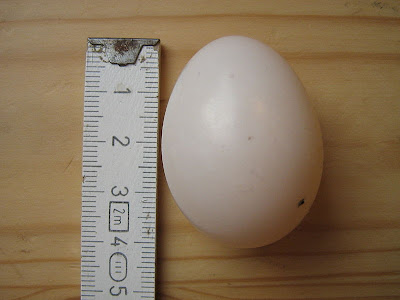Bully birds include Crows, Blackbirds, Pigeons, Starlings, Mynahs and House Sparrows. These hungry avians are often attracted to a yard by cheap wild birdseed mix or suet that's made available on the ground or in easy-access feeders.
Bully birds are a nuisance, but you can take some simple steps to prevent the larger birds from dominating feeders—thus allowing less aggressive birds to get close and feed. Here’s how:
1. Modern Feeders: As bully birds are generally larger than most of the more “desirable” feeder birds, look for a rubber-coated mesh that surrounds traditional tube, suet and tray feeders. It allows smaller birds to pass through and enter the feeding chamber. Bullies such as Blackbirds, Pigeons, Crows and Mynahs can’t squeeze through.
The photographs in this posting are of different styles of Bird Feeders readily available, if not at local shops here at Tiruvannamalai, then easily ordered and purchased online.
 |
| Squirrel proof baffler |
2. Take cover: Many bully birds are known for their love of suet cakes, and it is not unusual for them to eat a whole cake in a single day. To prevent them taking advantage, hang suet feeder under a domed squirrel baffle or buy a Starling-proof suet feeder, which allows birds access to food only from beneath the feeder. Starlings are reluctant to go under any sort of cover.
 |
| Impossible for larger birds to perch at |
3. Catch seeds: Many find that foiling bullies at feeders isn’t quite enough because they often eat the food that the other birds drop on the ground. To solve this problem, place a large container under a hanging feeder. Bully birds are unlikely to fly into the container to get discarded seed.
 |
| Keeps all the Crows and Blackbirds at bay |
4. Be selective: Selective feeding is another way to control the kinds of birds that eat at your feeders. Generally, bully birds prefer bread, corn millet, wheat and sunflower seeds and do not like safflower or nyjer (thistle) seeds. By offering just selective seeds—and not wild bird seed mixes—only smaller less aggressive birds will come to the feeders to eat.
If you feel tube feeders with with only nyjer seed (thistle) and safflower seeds in hopper or tray feeders, such birds as Crows and Blackbirds will generally look elsewhere for the foods they like.
 |
| Suet Cake Feeder |
 |
| Another type of suet feeder uninviting to large bully birds |
5. Aid acrobats: Bully species usually require a perch to hold onto while eating, but most finches and many other small feeder birds can eat without perching at food ports. Finches can cling to the sides of a tube feeder and eat all day long. Bullies can’t. Some commercial tube feeders have perches above the food ports, where the birds have to stretch downward to feed—something that bully birds can’t do either.
 |
| Nice Baffler bird feeder |
6. Use bottles: Thwart suet-eating bullies at a cage like feeder by inserting a long perch that extends out both sides, placing a small soda bottle over each end. When a bully lands on a soda bottle, the weighty visitor rolls off the perch. Smaller birds are too light to roll off the bottles while feeding, or they can cling to the wire cage.
7. Offer alternatives: A male hummingbird is often aggressive and protective of a sugar-water feeder that he considers his own. Only “his females” and their young are allowed to feed undisturbed. The simple solution is to set up an additional sugar-water feeder on another side of your house, out of sight of the other male’s domain.
 |
| Happy, thriving birds at feeder |
8. Buy weights: Look for a bird feeder that has a weighted perch or treadle. When larger, heavier birds land on a treadle, it drops down over the bird food. (This device works against squirrels, too.) Lightweight birds can reach the food because the treadle does not drop down when they perch.
 |
| When this big, NOTHING is going to keep you out! |
Easy ways to discourage bullying birds and to make a haven for small indigenous birds:
Keep less open, grassed areas in your garden. This type of open environment tends to encourage the bigger birds. For smaller birds, set aside at least a part of your garden and allow them some territory of their own.
Create a garden with dense plants. The creation of denser foliage and the reduction of grassed areas will create a safe haven for smaller birds.
Grow thickets as they are ideal hiding places and homes for smaller birds.
Experiment with thick rows of shrubs rather than just having one or two here and there.







































